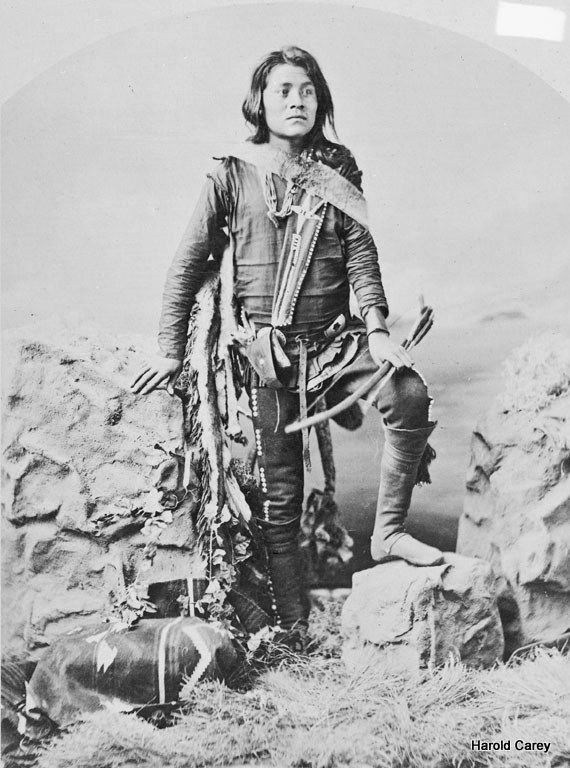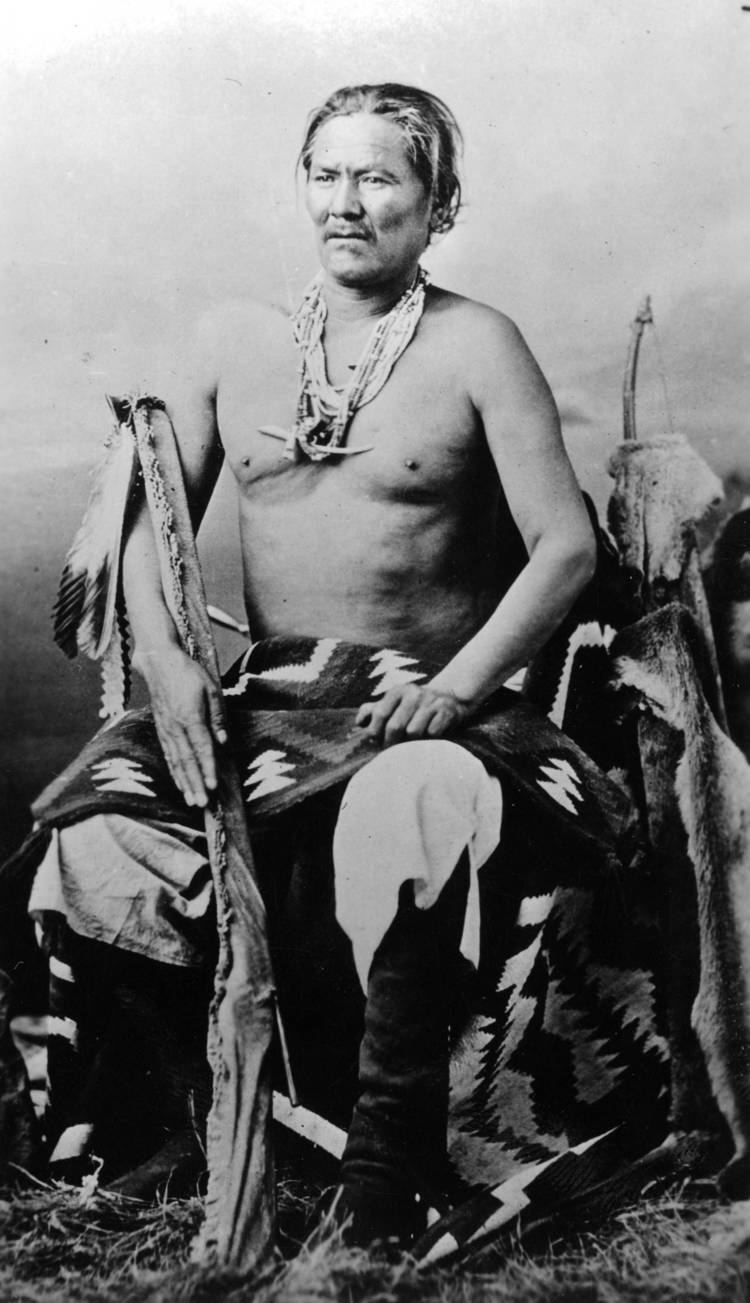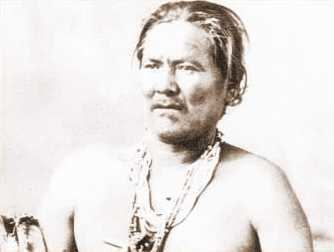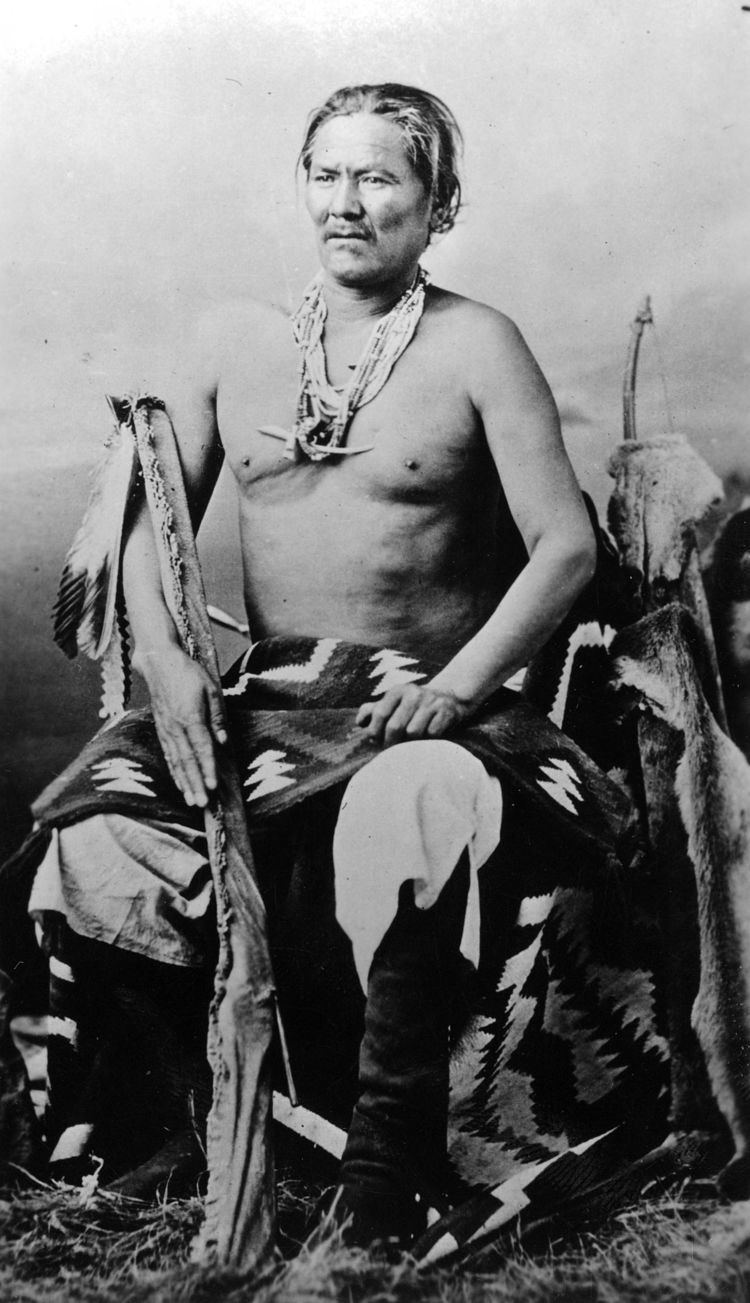Nickname(s) Ashkii Diyinii Died 1893, Navajo Nation | Name Chief Manuelito Role War chief | |
 | ||
Spouse(s) Asdzaa Tl'ogi, ("Weaver Woman") Similar People Barboncito, Kit Carson, Kanosh | ||
Stop sb 2109 by sit in paying homage to manuelito
Chief Manuelito (1818–1893) was one of the principal war chiefs of the Diné people before, during and after the Long Walk Period. His name means Little Manuel in Spanish. He was born to the Bít'aa'níí or ″Folded Arms People Clan″, near the Bears Ears in southeastern Utah about 1818. As any Navajo, he was known by different names depending upon context. He was Ashkii Diyinii (Holy Boy), Dahaana Baadaané (Son-in-Law of Late Texan), Hastiin Ch'ilhaajinii ("Man of the Black Plants Place") and as Nabááh Jiłtʼaa (War Chief, "Warrior Grabbed Enemy") to other Diné, and non-Navajo nicknamed him "Bullet Hole".
Contents
- Stop sb 2109 by sit in paying homage to manuelito
- Chief manuelito awards ceremony
- Early life
- Pre Long Walk
- Post Long Walk
- References

Manuelito was a prominent Navajo leader who rallied his nation against the oppression of the United States military. For several years he led a group of warriors in resisting federal efforts to forcibly remove the Navajo people to Bosque Redondo, New Mexico via the Long Walk in 1864. After being relocated to Bosque Redondo, Manuelito was among the leaders who signed the 1868 treaty, ending a period of imprisonment in United States government internment camps and establishing a reservation for the Navajo. Manuelito was also an advocate for education for Navajo children.

Chief manuelito awards ceremony
Early life

Manuelito was born into the Bit'ahni Clan (Within his cover clan) near Bears Ears, Utah where he was born and raised.
He married Juanita a daughter of Narbona (1766 – August 30, 1849) after joining Narbona's Band, and went to live at their camp near the Chuska Mountains. Narbona's reputation as a wealthy and powerful headman impressed Manuelito. He especially admired Narbona's fearless attitude, although Narbona tried to teach him the value of peace as well as war. Manuelito spent his days shooting arrows and competing with other young men in countless foot races and wrestling matches, always winning. He dressed in well-fitting buckskins and a finely woven blanket. He couldn't wait for his first battle. When word came in the winter of 1835 that 1000 Mexicans (from New Mexico) were coming to attack the Navajos, Manuelito fought his first in what would be many violent battles. There he earned the name Hashkeh Naabaah (″Angry Warrior″).
In the years that followed, Manuelito led one raiding party after another, joining forces with other leaders such as Ganado Mucho and Barboncito to attack not only the hated Mexicans, but also the Hopis in Arizona, the Puebloan peoples of New Mexico, the Utes, the Comanches, and the Apaches. Food supplies, livestock, and women and children were all fair game, and eventually Manuelito married one of his many Mexican slaves, Juanita (1845-1910).
Juanita's Navajo name was Asdzáá Tl'ógí, ("Weaver Woman"); a dress and saddle blanket woven by Juanita survive to this day. Her biographer and great-great-great granddaughter Jennifer Nez Denetdale describes taking a trip to Los Angeles to view the dress.
Pre-Long Walk
Post Long Walk
Manuelito, as he was known to the white settlers and government forces, was Ashkii Diyinii, Holy Boy, to his own people, later to earn the name Haastin Chʼil Haajiní, or Sir Black Reeds, named for 'the place among the black reeds'.
Upon his return, he again lived east of Tohatchi. He became principal chief after Barboncito of the eastern Navajos.
